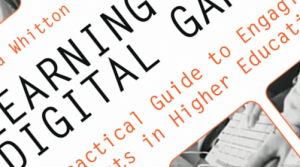Williams (2012) Karl Popper
Williams, L. (2012). Karl Popper, the enemy of certainty, parts 1 – 5. The Guardian.
Karl Popper (1902-1994), a philosopher of science, sought to explain how scientific theories could be verified as true. As a teenager, Popper was attracted to the irrefutable explanations of Marxist ideology; however, he grew to oppose these unfalsifiable claims. Throughout his adult life, Popper supported political moderation, tolerance and liberalism, and furthered understanding of politics, scientific methods, and epistemology (the part of philosophy of that deals with knowledge). Popper’s ideas are now commonly incorportated into research methods and are even considered common sense.
Popper disagreed with logical positivism and empirical science that verified ideas through experience and experiments. As patterns and theories became evident, scientists appeared to look for further evidence to support (rather than refute) their case, with any exceptions being explained through additional subsidiary and ad hoc hypotheses.
Popper insists on falsificationism. Regardless of how much evidence supports a theory, if one thing can disprove a theory, then the theory is not scientific. Popper asserts that exceptions prove that a theory is false, and that exceptions do not warrant additional explanation. Popper tolerates pseudo-sciences, such as psychology, because they do not make completely false claims, but instead stumble across interesting half-truths in non-scientific ways. Popper maintains that destructive testing is the only viable scientific method. He seeks refutation, and insists that confirmation too simple and feeble. The weakness in Popper’s demand for falsification is not theoretical, but behavioural. In reality, scientists do not reject theories because of a single exception, which shows a weakness in a theory.
Kuhn sees Popper as too idealistic. Kuhn states that scientific theories are governed by ever changing paradigms, which have a constant core theory and changing subordinate hypotheses which are introduced and adapted as new evidence emerges. If a long held core theory is totally disproved, then a paradigm shift occurs. However scientists appear to hold on to theories even when evidence disproves them.
Lakatos holds a more refined version of falsificationism. Lakatos claims that rather than deliberate whether a scientific theory is true or false, the research methodology and methods should be examined to establish whether the research process is improving or deteriorating.
Feyerabend disagrees with Popper. Feyerbend protests that auxiliary ad hoc hypotheses are essential because science does not adhere to epistemic ideals nor fixed principles and methodological rules. Feyerabend proclaims that the truth can only be judged in relation a specific situation and context.








